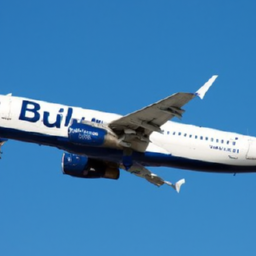
The airspace above Moscow was temporarily closed after two Ukrainian drones were shot down, resulting in delays at all four of Moscow’s airports. The incident occurred on August 22nd and led to operations being paused at Sheremetyevo International Airport, Domodedovo Airport, Vnukovo International Airport, and Zhukovsky International Airport. Moscow, with its population of 22 million people, boasts a network of four airports, with Sheremetyevo being the busiest. The ongoing conflict has adversely affected Russia’s aviation industry, with airlines struggling to maintain their fleets amidst sanctions and turning to Russian-made aircraft. Despite the airspace reopening, the day’s disruptions continue to have an impact on flight schedules.
Visit The Best Flight School in Alaska!
Summary
The airspace above Moscow was temporarily closed after two Ukrainian drones were shot down, leading to delays at all four of Moscow’s airports. Moscow has four airports, with Sheremetyevo International Airport being the busiest and Domodedovo Airport being the most affected by the disruption. The ongoing conflict has negatively impacted Russia’s aviation industry, with airlines struggling to maintain their fleets and turning to Russian-made aircraft.
The Drone Attack
Shooting down of Ukrainian drones
The airspace above the Russian capital was closed on Tuesday morning following a Ukrainian drone attack in the nearby town of Krasnogorsk. The incident on August 22nd led to operations being paused at all four of Moscow’s airports. The Russian defense ministry confirmed that two drones were detected and destroyed by air defense systems over the territory of the Moscow region. Russia also claims to have shot down a further two Ukrainian drones over the Bryansk region that borders Ukraine.
Moscow airport closures
As a result of the drone attack, all four of Moscow’s airports had to temporarily close their operations. This led to significant disruptions and delays for flights in and out of the city. The closure of the airports was necessary to ensure the safety and security of passengers and aircraft in light of the drone attack.
Impact on flights
The closure of Moscow’s airports had a major impact on flights, causing delays and disruptions for passengers. Flights were unable to take off or land during the closure, resulting in frustration and inconvenience for travelers. The reopening of the airspace after the incident allowed flights to resume, but the earlier delays continued to affect the operations of the airports.
Want to become an Alaskan Pilot and Live the outdoor dream? Click hear to read more!
Moscow’s Four Airports
Sheremetyevo International Airport (SVO)
Sheremetyevo International Airport is the busiest airport in Moscow, handling the highest number of passengers. With 22 million passengers in 2022, it serves as the main hub for Russia’s flag carrier, Aeroflot. The airport operates both domestic and international flights, with its busiest routes currently being to St Petersburg, Sochi, and Kaliningrad.
Domodedovo Airport (DME)
Domodedovo Airport was the most affected by the temporary closure of Moscow’s airspace. It saw 21 million passengers in 2022 and is a major hub for home carriers Ural Airlines and S7 Airlines. The disruptions caused by the drone attack had a significant impact on the operations of these airlines and the overall functioning of the airport.
Vnukovo International Airport (VKO)
Vnukovo International Airport is the third-largest airport in Moscow, handling 12 million passengers in 2022. It primarily serves as a domestic hub but also operates a few long-haul international services. The airport offers flights to popular holiday destinations such as La Romana, Phuket, and Zanzibar.
Zhukovsky International Airport (ZIA)
Zhukovsky International Airport is the smallest of Moscow’s airports, with limited services to destinations across the region. It caters to a smaller number of passengers compared to the other airports in Moscow, but it still plays a role in the city’s aviation network.
Impact on Aviation Industry
Struggles with spare parts and maintenance
The ongoing conflict has had a negative impact on Russia’s aviation industry, particularly in terms of maintenance and spare parts. Sanctions have prevented deliveries from aircraft manufacturers like Airbus and Boeing, making it difficult for airlines to source the necessary spare parts for their fleets. This has led to challenges in maintaining the airworthiness of aircraft and has resulted in disruptions to airline operations.
Shift to Russian-made aircraft
To overcome the challenges posed by the sanctions and the difficulties in sourcing spare parts, many Russian airlines have turned to Russian-made aircraft like the Sukhoi Superjet 100. By relying on domestically produced aircraft, airlines can mitigate the impact of the conflict on their operations and ensure the continued functioning of their fleets. This shift towards Russian-made aircraft reflects the industry’s resilience and adaptability in the face of adversity.
Focus on domestic and selected international routes
The ongoing conflict and the challenges it presents have prompted Russian airlines to focus their operations on domestic routes and selected international routes. With the limitations on international travel and the closure of certain airports, airlines have had to adapt their route networks to ensure the viability of their operations. The focus on domestic routes and selected international routes to destinations that are currently accepting flights from Russia has enabled airlines to maintain some level of revenue and passenger traffic despite the difficulties posed by the conflict.
In conclusion, the drone attack and the temporary closure of Moscow’s airspace have had significant ramifications for the city’s airports and the aviation industry as a whole. The disruptions caused by the attack have highlighted the vulnerabilities of the industry in times of conflict and have led to a shift towards Russian-made aircraft and a focus on domestic and selected international routes. Despite the challenges, the industry has demonstrated resilience and adaptability in its efforts to continue operating and serving passengers.


